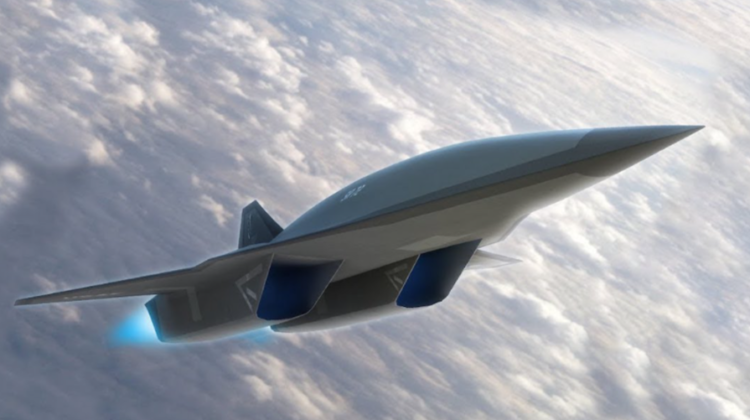
Breakfield is partial to the Air Force and, in particular, to fighter pilots. Breakfield’s dad was a 30-year military pilot who flew single-engine fighters from WWII through Korea and then in Vietnam. But the human element seems to be evaporating in the second most prestigious profession a person can have. Colonel Breakfield indicated that the only thing better than a fighter pilot was Star Ship Captain.
HUMANS PILOTING AIRCRAFT TODAY
Let us explore the evidence purging humans from piloting roles.
The Lockheed Martin SR-72 will hit speeds up to Mach 6 (23,335 kph or 14,500 mph), manned or unmanned. Yes, this the successor to the SR-71 Blackbird that had a top speed of Mach 3.3. Notice this aircraft is designed to run manned or unmanned. There is something very cool about taking the SR-72 and getting anywhere on the planet in just one hour. Remarkable.
There are some troubling issues with the manned or unmanned status of these advanced weapons. If they run unmanned, this implies Artificial Intelligence augmentation.
BOMBER REPLACEMENT
Now, look at this bad boy drone as a bomber replacement. The B-21 Raider is designed to operate as a long-range, high altitude stealth drone to deliver nuclear payloads. The human will be in control but at a distance and will inject Artificial Intelligence into the operational control of the aircraft.
NAVY ENHANCEMENTS
The Navy is also considering removing the human element in their deployments, as is evidenced by this formidable piece of nautical equipment.
The name of this magnificent weapon is perfect: Ghost Fleet Overlord. Destined to be unmanned and autonomous, the Navy’s Naval Sea System Command (NAVSEA) is wrapping up their proof of concept trials. Again, the human element is not needed as it is piloted by Artificial Intelligence via remote control.
We weren’t going to overlook how the Army will equip their ground troops. One of the Unmanned Ground Vehicles goes by the handle of RoBattle. The Artificial Intelligence enhanced heavily armored 7-ton RoBattle was built from the ground up to spearhead combat formations. The goal is to keep the human combatants safe when attacking head-on against an enemy. The claim is that human remote control will be required. However, as Artificial Intelligence algorithms continue to improve, this may only be an old claim.
Have we made the point, there are some serious military drones around? We began stating piloting roles, but isn’t anything remotely controlled a piloting exercise? In almost every case, the remote piloting role is augmented with artificial intelligence to deliver the best operational use. Understand, it is doubtful and way too egotistical to presume the U.S. is the sole creators of these technological marvels. As our favorite quotable source once said, “there be competitors out there.”
DEFENSIVE STRATEGIES
We have explored the Artificially Intelligent augment to replace the human element in offensive technology. What about the defensive drone strategy? What one side builds, the other side can mimic or outright steal, so countermeasures are critical.
Unmanned Attack Vehicles (UAV) offensives are vulnerable to small and highly controllable, and evasive attack drones armed with a payload. Countermeasures are engineered for these counter-terrorism strikes because of the enemy’s access to this technology. Of course, not every drone strike-down threat is from quadcopters ordered on-line. These modest tools still cling to human operators.
Fact or Fiction
Breakfield and Burkey capture these types of cyber-attacks in our series. The closest example we have is offered in The Enigma Gamers-A CATS Tale. We use several examples of organizations that have fully embraced a total A.I. enhance drone/automatic deployment as core to their business model. Then we show how the drone-like operation is infiltrated with software viruses designed to capture the business’s operation and hold it for ransom. An open-pit mine named Kookaburra is operated completed remotely to keep fragile human beings out of the desert heat and hardship of Western Australia while the A.I. enhance equipment does all the heavy lifting. Our cyber bad guys take over all the equipment and even the aerial drone that keeps vigilance over the entire site. When the conglomerate refuses to pay the ransom, remote drones turn on each other, and all the equipment is ruined.
Impossible, you say? Okay, one last proof point here. It wasn’t that long ago that the U.S. Air Force admitted that one of their unmanned Air Drones had contracted a computer virus. Of course, it was waved off as inconsequential that it only infected an unimportant subroutine, but there it was. Millions of dollars in research being used in the advanced air defense of our country are now compromised by a miserable $1.98 computer virus. Our position? If it can be done once, it can be repeated with far more significant consequences.
Still have doubts about an invasive software program and how effective it can be? See massive Solarwind hack article on U.S. soil: https://zd.net/34tnOo2.
